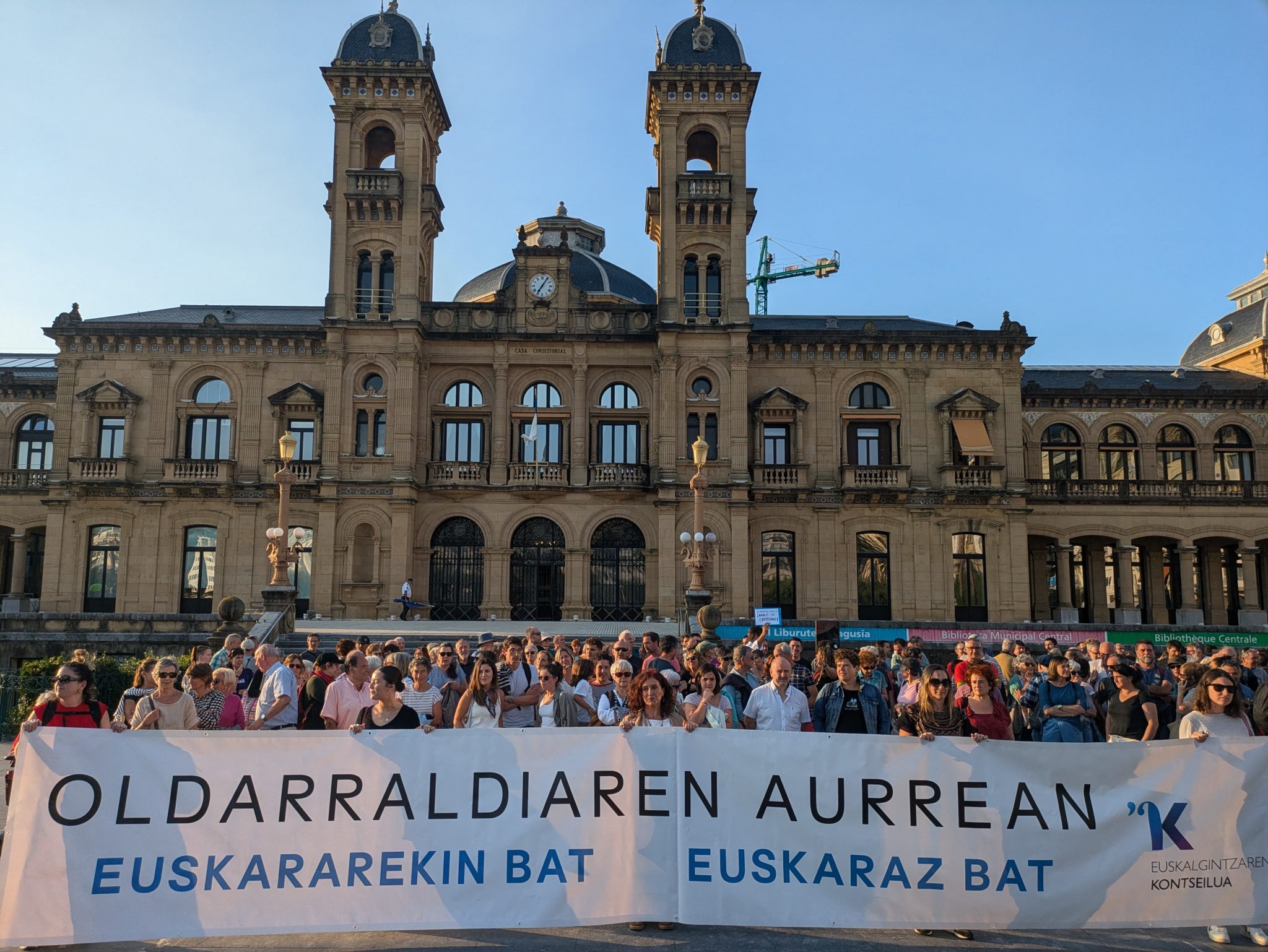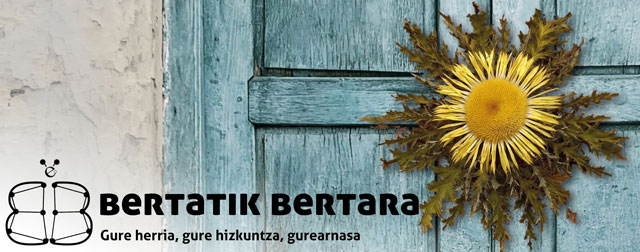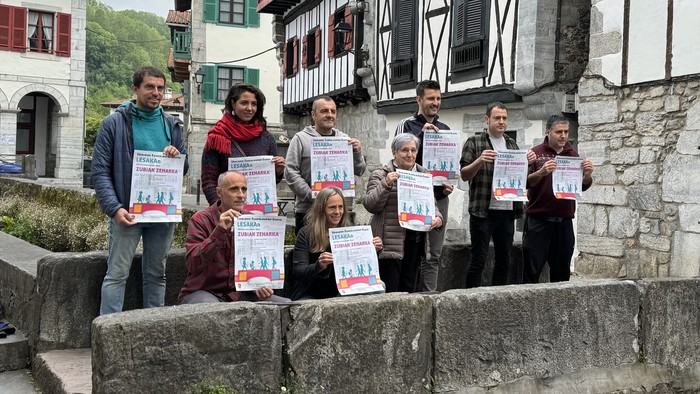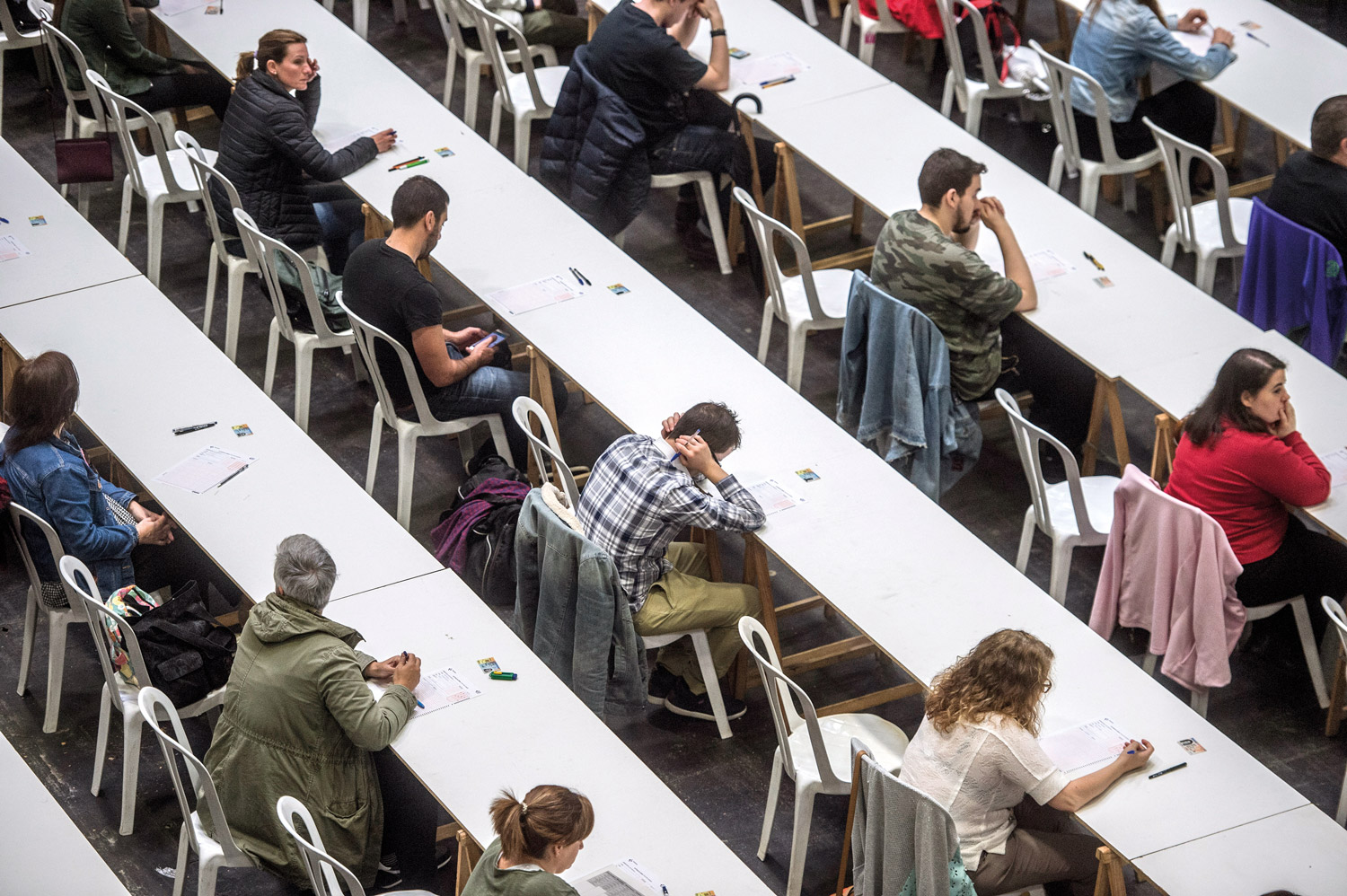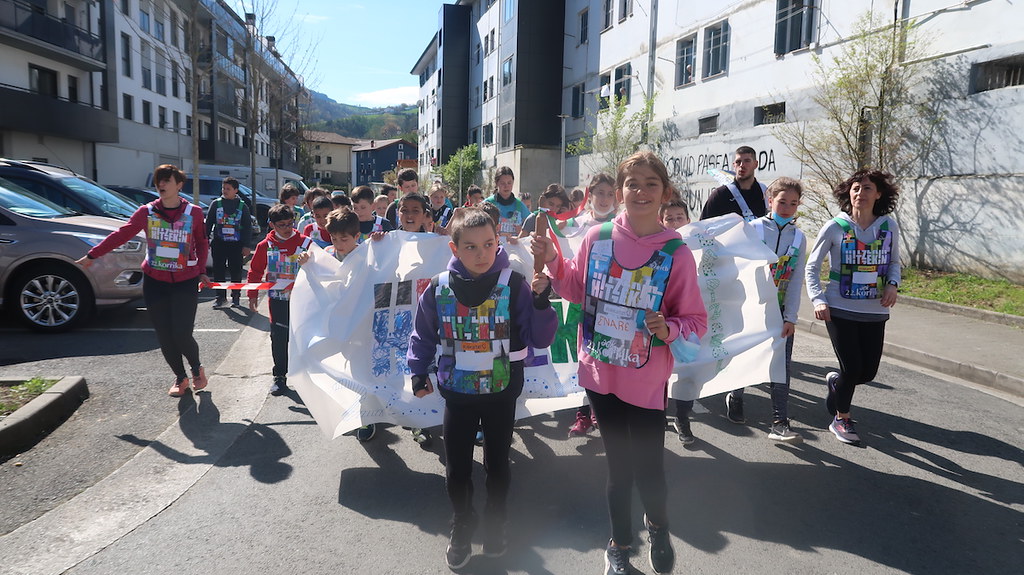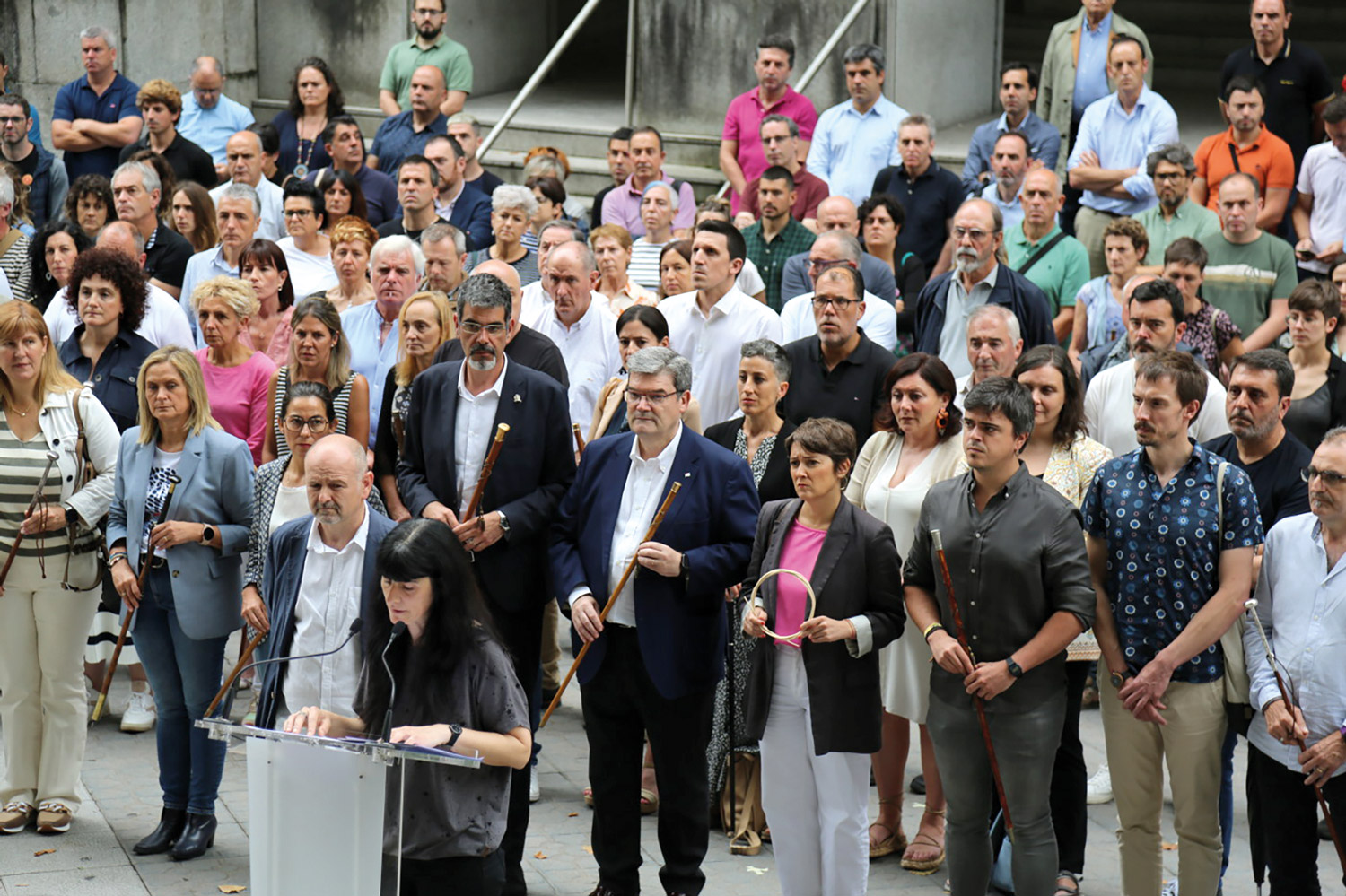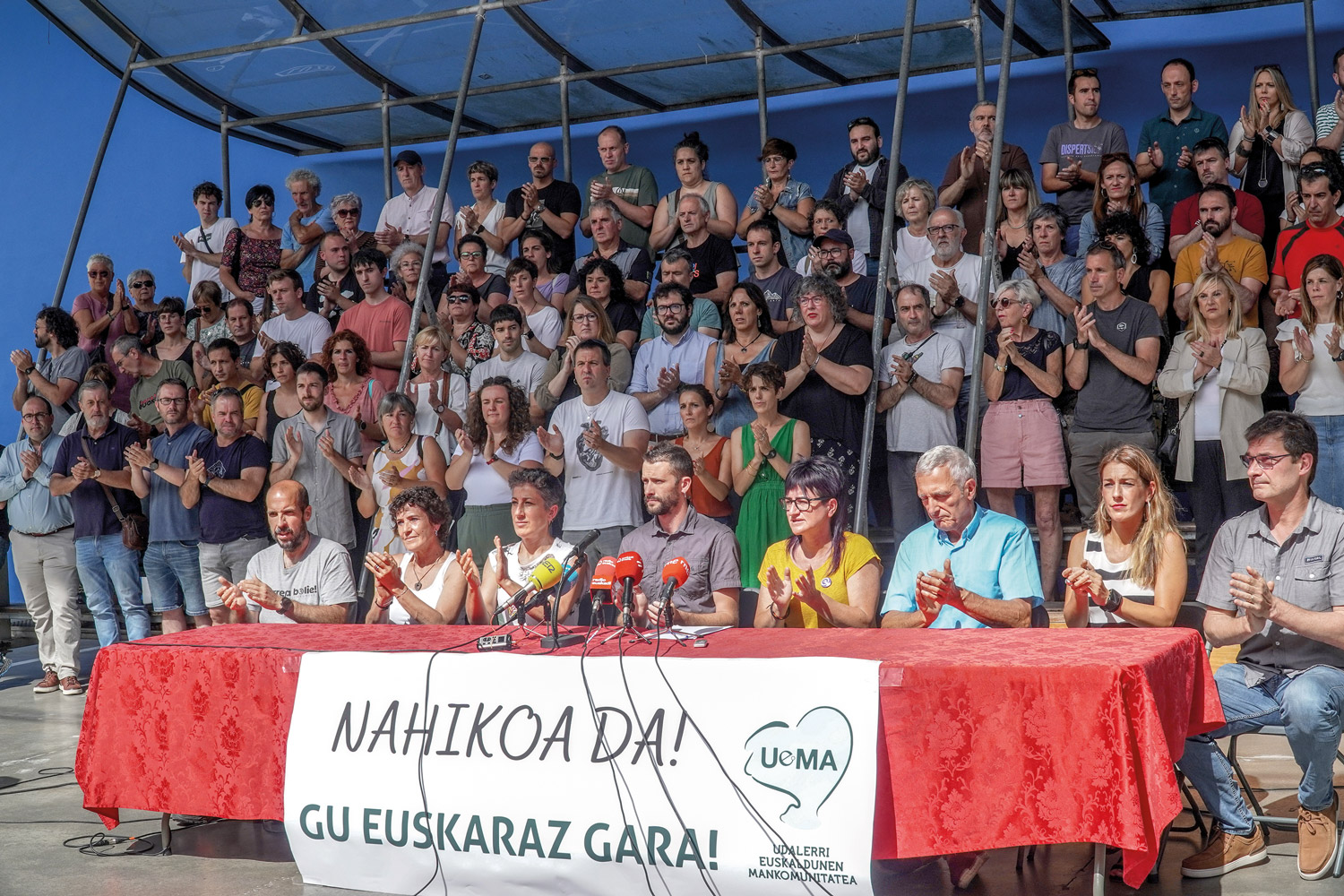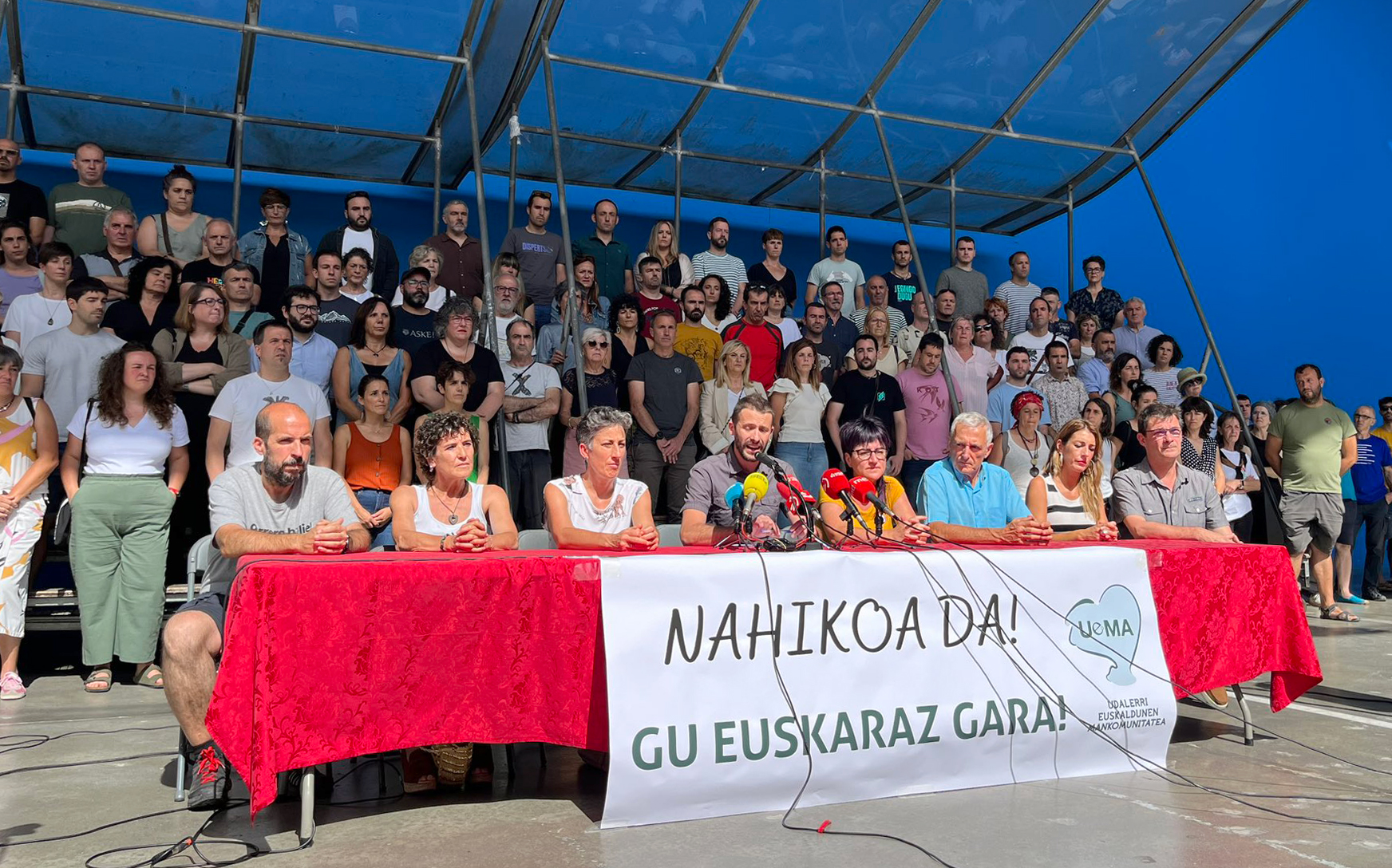And you, visitor, do you know that there is talk of Basque?
- From now on you will see them through the streets of Zumaia. The guide will explain to tourists about the origin of the Basque Country, explain where it is done and what dialects it has, encourage them to guess the number of speakers. They will not talk about the famous flysch, but about the Basque identity, culture and the Basque. This is an initiative promoted by the Basque and tourism departments of the City of Zumaia, and which, taking into account what has reached their ears, is the only guided tour of this kind in Euskal Herria.

The guided tour Enigma bizia, which was launched in March in Zumaia, is a practical example of reflection on the relationship between tourism and the Basque people. The City Hall of Zumaia has decided to do the test with a guided tour of these characteristics. Also, the municipalities of Lekeitio, Bermeo, Zarautz, Zumaia, Oiartzun, Cinco Villas, Baztan and Leitzalde are reflecting on Euskera and tourism.
UEMA's technician, Imanol Haro, has uncovered the reflections that have been carried out in recent months. First: The agents are concerned about how Euskera appears on the tourist media (leaflets, webpages...). On the one hand, the use of Euskera in the supports is scarce; on the other hand, the message given to the visitor about the Euskera when it is directed to the spaces of Euskaldunes is especially worrying: “The oldest language in Europe”, “Euskera, a treasure to be protected”… According to Haro, Euskera appears in the museum’s heritage. “We want it to be a living language. Let the Catalan or the French that comes to Urola Costa realize that there is talk of Basque”.
The Zarautz Malecon, emerging from winter to summer
The Basque technicians of the municipalities who are reflecting in the working group and the technicians of UEMA have put on the table a second reflection: analyzing the linguistic trends in the tourist centers, they have realized that in some places there is a change of language between winter and summer. In the famous Zarautz Malecon, the terraces are reproduced. In winter the menus are in Basque and in summer they are in English. The server will give you the first word not in Basque, but in English or Spanish. The owner will prefer the server to know English before Euskera. Haro gives us the example of a small town in Navarre. Throughout the week, the use of Euskera, which gave the level of an Euskaldun people, was evaluated. The weekend was the same measurement and the use fell from top to bottom.
The third reflection has to do with the lack of experiences. In other words, Haro believes that in the tourist offer they sell Basques, Basque identity and Basque culture, but there is no experience of living or seeing what has been shown. Precisely, the guided tour Enigma bizia offered by the Geopark of the Basque Coast in Zumaia is a practical exercise to explain what we are.
“The Basque Country as a barrier or as an added value?”
Haro has given us an example of the udatian who lives in Lekeitio between two and three months. Most of those who approach Bilbao, and although many will not do so in Basque, understand it, and many parents want their children to speak in Basque in Lekeitio. However, in the village a different attitude has been adopted, the hospitality industry does so in Spanish and the cultural activities have also been carried out in Spanish. The UEMA technician asks: “How do the tourist villages think the visitor is? Many times the visitors are Basque.” In Lekeitio, they asked visitors about their experience with the Basque people, to see if they knew they were Basque, if they were bothered... Conclusion drawn: “The Basque is not something negative for visitors, it does not bother them, and to some extent they value it.” The study by Ibiltour, which manages the tourism data of the CAV, was carried out in a similar way. They asked visitors whether they included the Basque country in negative or positive aspects. 98% did not choose either. UEMA is conducting similar questionnaires in Leitzaldea, Zumaia and Bermeo. The objective of the questionnaire is not only to know if the Basque language is an obstacle or not, but also to know if for visitors it is to listen to their own language, to see, to breathe, it is an added value.
Guided tour “Enigma bizia” in Zumaia

As this is a new visit, with the uncertainty of the influx of people who will attract it, they will approach the tourist office of Zumaia, where they expect about fifteen people. Some of them have a minimum knowledge of the Basque Country. This has been demonstrated a few minutes later when the driver has asked them to say words in Basque: “good morning”, “yes” and “no”.
To learn more, everyone has taken a look at the Enigma bizia dictionary, which was distributed at the beginning of the visit. The driver warns them: “Zumaia is the natural space of the Basque Country and you will have the opportunity to use it.” He has announced that his goal is not only to listen, but also to know the Basque culture and the Basque culture: “We will get to know each other and have fun.”
After this note, the first remarks about Euskera have come: where it is done and what dialects it has. It was surprising that among the participants was Luis Luziano Bonaparte who, in 1863, elaborated the first map of the Basque dialects. In addition, the guide has highlighted the use of the Basque Country batua, as it is also local neighbours who have participated in the exchange of views that occurs so many times.
Its origin has been discussed at a later date: “Where does the Basque country come from?” It can be a common question in these visits; many theories, without clear answers. The influence of the Basque language in the surrounding languages is known, for example, in some poems in Spanish and in the creation of words.
Toponymy also has a subject, so the guide has referred to it. What do the Algorri words that are heard so many times by those who come to see Talaimendi, San Miguel Artadi or flysch? Likewise, looking at the environment, you can find in the streets many clues of who we are, as in the labels. One of them is that of the insurance company, which they have used to explain the meaning of the house, although later on the house – the cottage – has been important in our environment and its current weight.
As there is nothing to say, the next stop has been on the Odiet fronton. The driver, taking the ball out of the bag, asks if anyone wants to test it. Three or four people have been encouraged, and after playing with each other, they have felt the first hand pains and also interest, as they have begun to wonder how to play. In addition, the programme will deal with rural sport and rowing, and will provide a summary of the day.
After leaving the moods behind in the pediment, the rest of the melodies have taken over the school. Taking the txistu as its axis, they have mentioned several Basque instruments: dulzaina, trikitixa, txalaparta…
Coincidentally, along the way, other tourists have found themselves in the source of the film (Eight Basque surnames) that so popular made the city of Spain. The issue to be discussed is clear: Basque surnames. Visitors meet those who appear there, and today they have known their origin, often the house. The senior and the matriarchy have also been centers of interest.
Speaking of livelihoods, the guide explains at first the weight of fishing in the economy and in the families of Zumaia, so the visit has its penultimate stop in the cold. In addition to the way fish are sold, the guide shows the vestiges that Basque fishermen have left internationally. On his trip to Newfoundland he recalled the time when it was said that the Priests were better, along with a few words that were later left in local toponymy.
As for the number of speakers, he asked where the Basque country stands, out of the 7,000 currently in existence. More optimistic responses than those from outside, but no one is right. “We’ve heard a lot on the street, people of different ages use it, although sometimes they mix it with Castilian,” one of them said.
Finally, the gastronomic society of Madrid, Murcian and zumaiarras who have participated in the visit and who have lived and continue to live in Catalonia for years have been mentioned. There has been talk of the functioning of associations, of the visit, of what tourists are looking for, etc. Just as the sense of the visit has been internalized, the Murcian has greeted with the word “good morning” the members who have come to eat in society. Next to this, the children have continued to review the words of the small dictionary: “Thank you,” “one, two, three, four”…
Hamahiru ZirHika kide batu dira hitanoaren erabilera aldarrikatzeko eta antolakundearen ekintzen berri emateko. Azalpenak Badihardugu elkarteko Idoia Etxeberria eta Galtzaundiko Uxoa Elustondok egin dituzte. Horiei, Andoni Egaña eta Amaia Agirre bertsolariak eta... [+]
"Zubiak zeharka” lemapean, egun osoko egitaraua prestatu dute UEMA eguna ospatzeko. Herriko eragile guztiek hartu dute parte programaren prestaketan eta ekimen herrikoi eta partehartzailea izatea lortu dute horrela.












